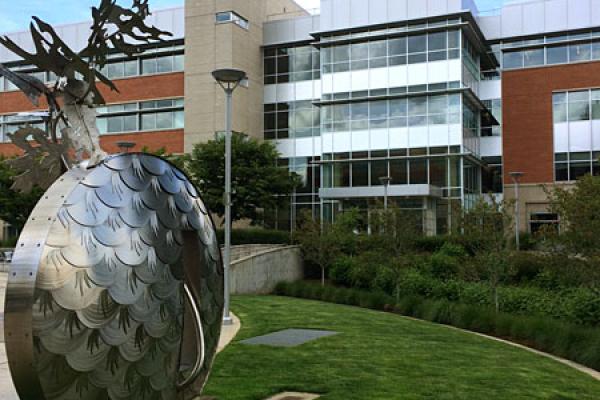Updated October 2020
Clackamas County property owners within the Portland Metropolitan Urban Growth Boundary are responsible for the upkeep and maintenance of street trees in the public right-of-way or planter strip adjacent to their property.
Before selecting a tree to plant in the planter strip, make sure that the tree is on Clackamas County’s approved Street Tree List and is appropriate for your site conditions. When looking at the site conditions, think about the tree today and at maturity, when it reaches its full height and width. You can find guidance for the placement of street trees in Standard Drawing L100 and Standard Drawing L200 of Clackamas County Roadway Standards.
What is a planter strip?
The planter strip is the area in which street trees are planted; the land between the edge of the roadway and the private property line. In areas with sidewalks, the planter strip is usually the grassy area between the street and the sidewalk.
What is a street tree?
Street trees are trees planted in the public right-of-way in the planter strip.
Trees provide environmental benefits, such as storm water retention, shade, wildlife habitat and reduced energy consumption. Trees help to bolster property values in residential and commercial areas, and improve the aesthetic appeal of urban streets. Street trees can also help to calm traffic and provide separation between car traffic and pedestrian areas.
If properly selected and planted with sufficient space to grow, urban trees can provide all of the above benefits at little cost. However, trees do have a life span. Sometimes an incompatible tree species is planted or grows in the wrong location, which may result in lifting sidewalks or cracked curbs. In this situation, the county may issue a permit for the tree to be removed as long as it is replaced with a more appropriate species. Similarly, trees that are dead, diseased or hazardous, as verified by a certified arborist, must be replaced.
Approved Street Trees List
It is important to plant a species of tree in the planter strip that will provide aesthetic and environmental benefits without eventually causing damage to the sidewalk or roadway. Therefore, the county has four lists of appropriate street trees, based on the width of the planter strip:
To select a tree from the list, first check the width of the planter strip in front of your property to make sure you use the right list.
The list also includes other valuable information that may be helpful to you as you decide which type of tree to plant.
- Native Species
If you’re looking for a tree native to the Pacific Northwest, we have noted the tree species that are native to areas west of the Cascade Mountains. - Height
The number on the list is the tree’s maximum height when it is allowed to grow to maturity with no constraints. (Please note that some types of trees planted in narrow planting strip areas may not grow to full height.) - Canopy Width
The number of on the list is the maximum width of the tree’s branches and leaves at maturity. This is important not just for shade and aesthetic considerations, but also because many trees grow out roots to the approximate width of the canopy in order to capture water that drips off leaves. Therefore, it is especially important to pay attention to canopy width when planting a tree near underground utilities. - Evergreen
Whether the species of tree is one that keeps its leaves or needles year-round or drops them in the fall - Allowed Under Overhead Wires
It is particularly important not to plant a tree that will eventually interfere with any overhead utility wires that cross over the planter strip. If there are wires where you’re planting, please be sure to check this column to make sure the species you’ve selected will not cause problems in the future. - Shape
 Narrow
Narrow
slender, oval or teardrop-like growth Round
Round
width similar in size to height; may also be oval or umbrella-shaped Vase
Vase
largest canopy near the top of the tree, with narrower growth below Pyramid
Pyramid
tapered, with a wide base and narrow peak
 Translate
Translate






